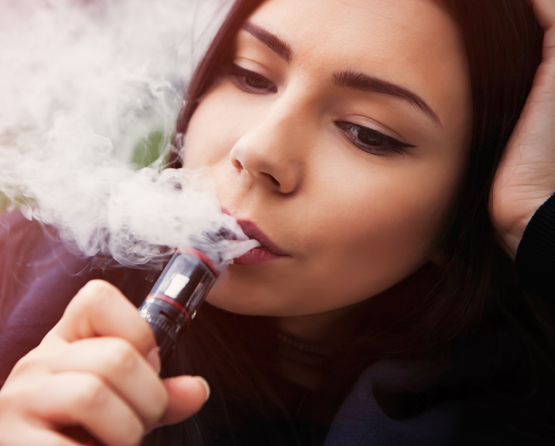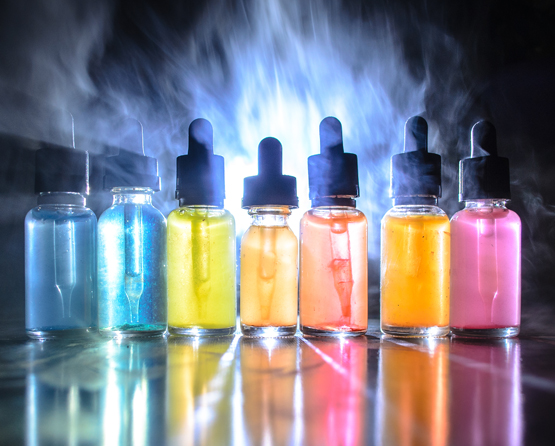Smokers Choice is dedicated to helping smokers of all kinds. As a company that embraces choice, we support your choice to make the switch! The earlier you stop, the greater your health benefits are. You are never too old to quit smoking cigarettes!
Health benefits of quitting
Lowered risk for lung cancer and many other types of cancer.
Reduced risk for heart disease, stroke, and peripheral vascular disease (narrowing of the blood vessels outside your heart).
Reduced heart disease risk within 1 to 2 years of quitting.
Reduced respiratory symptoms, such as coughing, wheezing, and shortness of breath. While these symptoms may not disappear, they do not continue to progress at the same rate among people who quit compared with those who continue to smoke.
Reduced risk of developing some lung diseases (such as chronic obstructive pulmonary disease, also known as COPD)
Reduced risk for infertility in women of childbearing age. Women who stop smoking during pregnancy also reduce their risk of having a low birth weight baby.
QUITTING: A TIMELINE
Within 20 minutes after your last cigarette, your body begins a series of changes that continue for years
20 Minutes After Quitting
Your heart rate drops.
12 hours After Quitting
Carbon monoxide level in your blood drops to normal.
2 Weeks to 3 Months After Quitting
Your heart attack risk begins to drop. Your lung function begins to improve.
1 to 9 Months After Quitting
Your coughing and shortness of breath decrease.
1 Year After Quitting
Your added risk of coronary heart disease is half that of a smoker’s.
5 Years After Quitting
Your stroke risk is reduced to that of a nonsmoker’s 5- 15 years after quitting.
10 Years After Quitting
Your risk of cancers of the mouth, throat, esophagus, bladder, kidney, and pancreas decreases.
15 Years After Quitting
Your risk of coronary heart disease is back to that of a nonsmoker’s.
*Statistics provided by https://www.cdc.gov

After You Quit:
- You’ll save money.
- Your sense of taste will return and you will enjoy the taste of food more.
- Your breathing and general fitness will improve.
- The appearance of your skin, teeth, and fingernails will improve.
- You’ll be more confident in social situations because you won’t smell of stale smoke any more.
- Your fertility levels will improve, along with your chances of having a healthy pregnancy and baby.
- You will protect the health of those around you by not exposing them to second-hand smoke, however careful you think you are being.
- You will reduce the chances of your children suffering from bronchitis, pneumonia, asthma attacks, meningitis, and ear infections.

What Is Harm Reduction?
Harm reduction is a strategy that is used when trying to reduce negative consequences associated with substance abuse. Vaping is seen as a strategy of harm reduction when trying to quit smoking. Quitting can be tough, and often smokers struggle with it, but many have found relief when switching to vaping nicotine rather than smoking it.

Buying Your First Vape
Getting into vaping can be intimidating, especially if you don’t exactly know what it is or have ever tried it. It’s important that the transition is as easy as possible for you. When getting started, it’s best to get a vape that is small with a good pull – something that mimics a traditional cigarette. We recommend getting a pod starter kit, which usually only contains the vape pen, a couple cartridges or pods filled with e-juice, and the charger. There are no external batteries or coils to install, and once you finish the pod it can simply be discarded. These closed systems are extremely popular among smokers trying to quit.
If you’re new to vaping and need some assistance getting started, stop into any Smokers Choice location and our friendly associates will help you!

What Is In E-Juice?
The base, or “liquid,” is made up of a blend of Vegetable Glycerin (VG) and Propylene Glycol (PG). These substances are in a lot of the things you already consume, and are generally safe to inhale. There is not enough research or evidence on the inhalation of VG/PG to determine if it is unsafe for human consumption.
In addition to VG/PG, there is the e-liquid flavoring and optional nicotine. E-juice comes in a wide variety of flavors and nicotine strengths and can be found or customized to fit your specific needs. When quitting smoking, most people start with a high-level nicotine e-juice and slowly wean themselves down until they eventually quit or find a satisfying, lower nicotine option. Ask one of our helpful store associates to learn which flavor and strength would be best for you!

Managing Nicotine Intake to Quit Smoking
Choosing the right nicotine level can be tricky, and at first, you’ll probably need to experiment with different strengths. If you’re a heavy smoker switching to vaping, automatically starting at a low or zero nicotine e-juice probably isn’t going to cut it for you. You’re going to want a high-level nicotine e-juice that is slightly less than your preferred pack of cigarettes (and preferably something that doesn’t taste like them!). Over time, you can gradually reduce your nicotine levels and consumption. E-juices usually come in the following strengths:
- 3mg (low)
- 6mg (medium-low)
- 12mg (medium)
- 18mg (medium-high)
- 24mg (high)
- 24mg (high)

